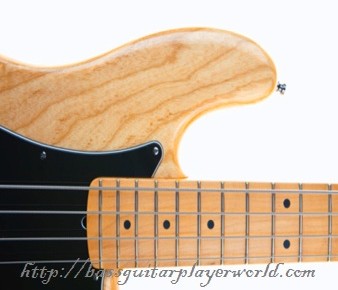Melodic Minor Modes – Taking Your Playing Further
 Diatonic scales aren’t the only scales in music. In fact, they aren’t even the oldest scales in music; far from it, they are younger than most known scales. Some of the oldest scales in music are known as modes; modes are scales that were built off of original scales.
Diatonic scales aren’t the only scales in music. In fact, they aren’t even the oldest scales in music; far from it, they are younger than most known scales. Some of the oldest scales in music are known as modes; modes are scales that were built off of original scales.
For instance, the C Major scale is made up of seven modes—one for each scales degree that it contains. The most commonly known modes are the C Major modes, but there are other modes that have different properties.
In this case, there are minor modes. In this article we will discuss a little bit about the melodic minor modes, and just what they can do for your playing. We won’t get too in depth, as the melodic minor modes are much more complicated than the regular major modes and will take some time to learn, but we will help you to understand them.
What is a Melodic Minor Scale Exactly?
First off, you need to understand melodic minor scales. A melodic minor scale is played two different ways; one ascending, the other descending. Ascending, you take the minor scale and raise the sixth and seventh scale degree notes one half step each. On the way down, you naturalize both notes, taking them from sharps, flats, double sharps, or double flats, to natural notes of the root kind.
Let’s use the most common of the melodic minor modes to do this; A melodic minor. This scale originally consists of the notes A, B, C, D, E, F, and G, but when you play it melodically it consists of the notes A, B, C, D, E, F#, and G#. On the way back down, the scale reverts back to A, B, C, D, E, F, and G, not because it goes back to normal but because the notes are naturalized.
 This scale is most commonly known as the jazz minor scale, as it is popularly used throughout jazz music whenever a minor scale is involved.
This scale is most commonly known as the jazz minor scale, as it is popularly used throughout jazz music whenever a minor scale is involved.
The best way to familiarize yourself with the jazz minor scale is by practicing. Take some time to feel around with the notes of the scale, making some licks and riffs by experimenting with the relationships between the intervals of the notes.
You may notice that the A melodic minor mode is, well, the same as the A melodic minor. This is because the first mode of any scale is the same as the scale itself. Why? It follows the exact same pattern that the scale itself does.
The tricky part about melodic minor modes is moving them down. Practice playing the scale in ascending and descending order, and keep in mind that the properties on the way up and the properties on the way down are completely different. This may take some getting used to, so take your time.
Once you are completely comfortable with the A melodic minor mode, try moving on to the next scale degree and changing its properties to fit in properly. Have fun, remember the difference between the ascending and descending side, and good luck!
Check Out The Perfect Learning Tool For Bassists of All Skill Levels
JamPlay offers the best online bass instructions on the Internet. With hundreds of professionally recorded lessons, Jamplay is the ideal place to learn the basics and improve your bass playing skills. With great teachers and carefully planned lesson structures, I guarantee you will be able to take your bass playing to a higher level in no time.
Related Articles
Comments are closed.





